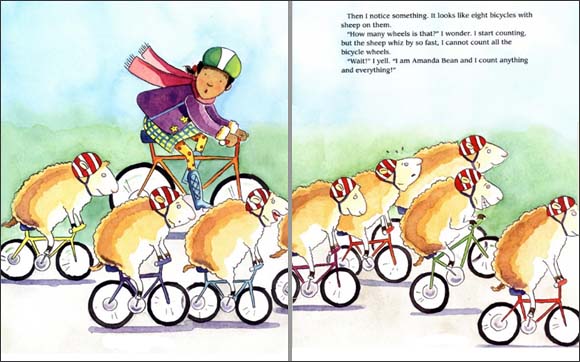Illustrator: Amy June Bates
Genre: fiction
Sub genre: Realistic Fiction
Theme: Overcoming Fears, dogs
Primary and secondary characters: Sara Baker
Awards:
Publication Date: 2005
Publishing Company: Farrar, Straus and Giroux
Sarah Baker is one brave little girl, except when it comes to being around dogs. Every time she is around, sees, or even hears about a dog she gets clammy and nervous. Then Ms. Harrington moves next door, and instead of having children that Sarah can play with, she has dogs, two very large dogs. Sarah tries to avoid her dogs, but one day the time comes where she has to face her fear. Any student would be able to relate to Sarah because most everyone of them more than likely has a fear that they are unable to overcome. A teacher could have students share their own fears and how they think they could overcome them. This could be done in a journal project where the children keep up with their progress throughout the year. The teacher could also have the students look up and research various phobias that people might have.









































